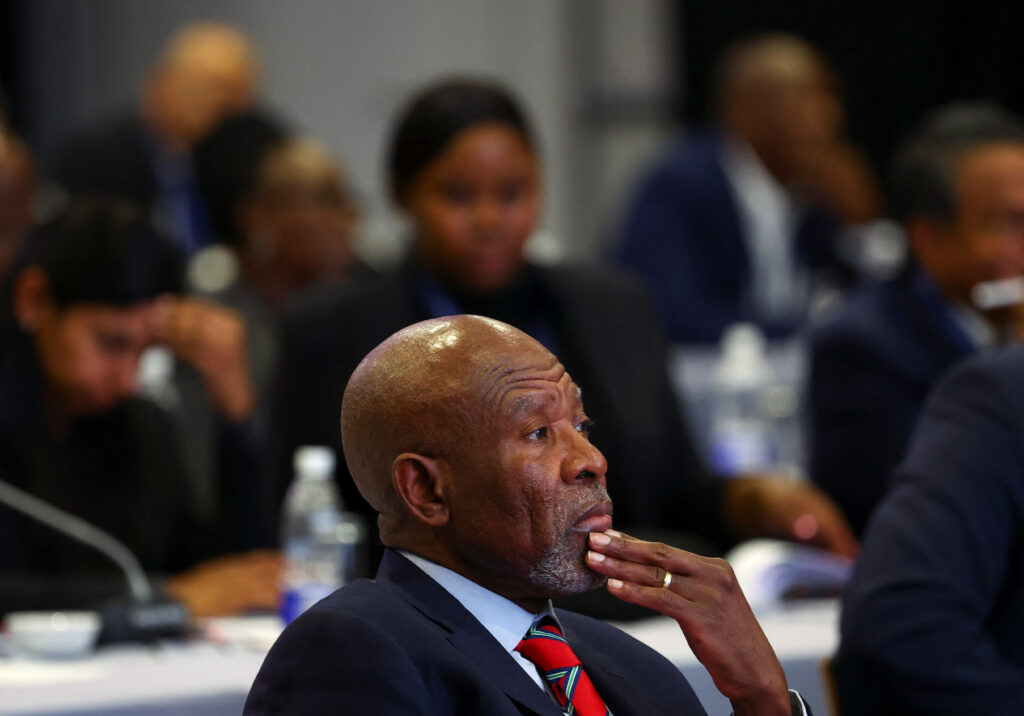By Kopano Gumbi, Anait Miridzhanian and Bhargav Acharya
PRETORIA (Reuters) – South Africa’s central bank kept its main interest rate unchanged on Thursday despite inflation being firmly within its target, stressing that deteriorating public finances risked fuelling price pressures.
A higher public sector wage increase and lower tax collections mean the government has struggled to meet expenditure demands this financial year, with the National Treasury recently taking a raft of cost-cutting measures.
South African Reserve Bank (SARB) Governor Lesetja Kganyago told a news conference that fiscal management was pushing up the country’s risk premium as bond yields had risen despite inflation coming down.
ALSO READ: SA Reserve Bank tweaks interest-rate decision model
“A deterioration in the fiscal matrix raises the country risk premium and raises the interest rate level at which we determine whether monetary policy is restrictive or not,” Kganyago said.
Economists had widely predicted that the repo rate would be maintained at 8.25%, but many were struck by Kganyago’s hawkishness including on government finances.
Razia Khan, chief economist for Africa and the Middle East at Standard Chartered, said there would now be a lot of focus on the finance minister’s mid-term budget on Nov. 1.
“Fiscal risks are now front and centre of what the SARB does next,” she wrote in a research note.
The SARB’s Monetary Policy Committee said exchange rate weakness and food and fuel prices were generating inflationary pressures along with a power shortfall.
ALSO READ: SA Reserve Bank to raise repo rate one last time in 2023
Inflation edged up to 4.8% year-on-year in August from 4.7% in July, data showed on Wednesday, remaining well within the central bank’s target range of between 3%-6%.
Kganyago was reluctant to say when the SARB might begin to cut rates given the risks.
“If you want to know when interest rates will come down, look at whether inflation declines to target and stays there on a sustainable basis,” he said.
Economists expect rate cuts could start in the first half of 2024 after the SARB paused its hiking cycle in July.
